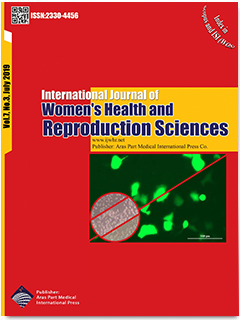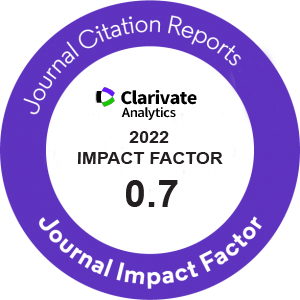| Original Article | |
| The Inhibitory Effect of Hsa-miR-330 Replacement on the Proliferation and Migration of Breast Cancer MCF-7 Cells | |
| Elham Hosseinzadeh1,2, Behzad Mansoori1,3, Ali Mohammadi1, Vahid Khaze1, Maryam Rezazadeh2, Behzad Baradaran1 | |
| 1Immunology Research Center, Tabriz University of Medical Sciences, Tabriz, Iran 2Department of Medical Genetics, Faculty of Medicine, Tabriz University of Medical Sciences, Tabriz, Iran 3Student Research Committee, Tabriz University of Medical Sciences, Tabriz, Iran |
|
|
IJWHR 2019; 7: 360?365 DOI: 10.15296/ijwhr.2019.59 Viewed : 3323 times Downloaded : 2441 times. Keywords : Breast cancer, E2F1, Hsa-miR-330, Cancer therapy |
|
| Full Text(PDF) | Related Articles | |
| Abstract | |
Objectives: miRNAs comprise a group of master gene expression regulators, exerting their effects after transcription through targeting specific mRNAs, hence, influencing cellular processes. A considerable number of miRNAs are known to affect cell proliferation and migration in breast cancer, one of which is hsa-miR-330, a key player in various types of cancers. The purpose of this study was to evaluate the anti-proliferative and anti-migrative effects of hsa-miR-330 on MCF-7 cell line. Materials and Methods: MCF-7 cells were transfected with pCMV-miR-330 vector and cell selection was performed in media containing Geneticin (G418). Subsequently, MTT assay was performed to evaluate the effect of hsa-miR-330 on proliferation and scratch wound healing assay was employed to evaluate cellular migration. Finally, using real-time PCR, the expression of hsa-miR-330 as well as the repressive impact on the expression of E2F was investigated. Results: Upon confirmation of hsa-miR-330 induction in MCF-7 cells via GFP channel imaging system, miR-330 expression was demonstrated to be increased 10 folds in stable cells. The results of MTT and wound-healing assays demonstrated an inhibitory role for hsa-miR-330 in proliferation and migration of stable hsa-miR-330-transfected MCF-7 cancer cells compared to controls. In addition, after transfecting cells with hsa-miR-330, E2F1 was down-regulated in comparison with controls. Conclusions: Based on the results of the current study, we suggest a potential inhibitory role for hsa-miRNA-330 in cell proliferation as well as cell migration in breast cancer by targeting E2F1 mRNA. Additionally, a therapeutic role can be suggested for hsa-miR-330 in terms of target therapy for breast cancer. |
Cite By, Google Scholar
Google Scholar
PubMed
Online Submission System
 IJWHR ENDNOTE ® Style
IJWHR ENDNOTE ® Style
 Tutorials
Tutorials
 Publication Charge
Women's Reproductive Health Research Center
About Journal
Publication Charge
Women's Reproductive Health Research Center
About Journal
Aras Part Medical International Press Editor-in-Chief
Arash Khaki
Mertihan Kurdoglu Deputy Editor
Zafer Akan























